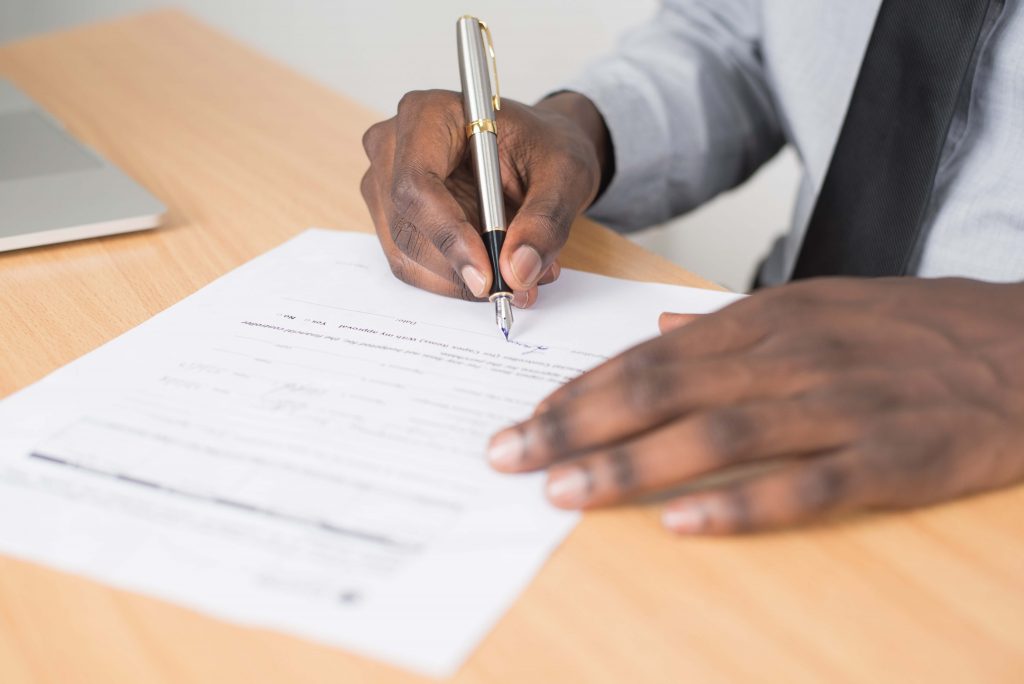From contributions from individual donors to sponsorships, nonprofits have a variety of funding sources. It’s important for every nonprofit to have multiple revenue streams to build a healthy, sustainable organization, and a common source of funding for nonprofits is through grants. Grants aren’t always easy to get, but with a well-written proposal, you can blow your competition out of the water.
What is a grant?
A nonprofit grant is a financial donation given to an organization from a foundation, corporation, or the government, otherwise known as grantmakers. Grants are usually given for a specific purpose, like a project or initiative your nonprofit is planning.
Where can you find grants?
There are a variety of sources you can obtain grants from.
- Government. From federal endowments to state and municipal-funded sources, there are plenty of grants available at the government level for different purposes. There are many government grant-making agencies, but it’s important to determine if you meet eligibility requirements before submitting a grant request.
- Corporations. Corporate partnerships can come in the form of matching gift programs, in-kind sponsorships, volunteer grant programs, and other financial requests. Do your research and find companies that align with your mission to increase your likelihood of receiving support.
- Private foundations. Some nonprofits exist for the sole purpose of providing grant funding to other organizations. These are considered private foundations. They often provide funding to nonprofits in specific fields. For example, the Bill & Melinda Gates Foundation provides grants to nonprofits that do work in the areas of education, health, global development, and global health.
If you’re struggling to find grants, reach out to a philanthropy-serving organization that specializes in the field your nonprofit works in. These organizations are non-grantmaking entities, but their work involves helping nonprofits network with important grantmakers and getting them the information they need to successfully obtain grants.
Types of grants
When you search for grants, you’ll find that there are many different grants you can apply for.
- Competitive grants are merit-based grants. These grants can be difficult to get and require a well-thought-out grant proposal. There are usually strict rules and requirements you need to follow during the application process, so it’s important to pay attention to details if you’re pursuing a competitive grant.
- Formula grants are pre-determined awards. These are grants that are automatically awarded to whoever applies and is eligible to receive the grant.
- Continuation grants apply to organizations that have previously been awarded a grant. You can apply for a continuation grant if you would like to renew your grant or need a grant extension.
- Pass-through grants are government grants that have originated from the federal government and have been passed down to state agencies before being distributed according to eligibility requirements.
Letter of inquiry, grant letters, and grant proposals
There are three types of proposals you may face when searching for grants. A letter of inquiry is a short, two-to-three-page document that summarizes the project or initiative you are seeking a grant for. You might send this out to a variety of potential grant partners to see if your project would be a good candidate for their funding. If it isn’t, you can move on to other grant sources and you won’t have wasted time writing out a full grant proposal for a grantmaker that isn’t a good fit.
A grant letter is also a shorter grant proposal that succinctly explains your project, your nonprofit’s mission, and the funds you need. It differs from a letter of inquiry in that you’re using a grant letter to request funds, while a letter of inquiry is used to just gauge interest for your project. A grant letter should be a three-to-four-page document, and while it may seem easier than a full grant proposal, it can be a struggle to state your case in a shorter format. Some grantmakers prefer this to a longer, more formal grant proposal, so make sure you know what kind of proposal you’re being asked for when applying for a grant.
A formal grant proposal has a longer structure with multiple components. This is a more comprehensive request for funding from grantmakers and is a much longer document, with anywhere from five to 25 pages of information. When you’re applying for a grant with a grant proposal, make sure you’re following the funder’s instructions for how your proposal should be structured and what should be included.
Grant Proposal Components
Grant proposal structures will differ between applications. Some funders may request that you follow a specific structure when creating your proposal while others may only require a short document with less structure. It’s important to read all of the instructions provided to you on your grant application before writing up your proposal.
Personalized cover letter
Your grant proposal should always start with a cover letter introducing your organization and project to whoever is making decisions about who gets a grant. This is the first impression anyone will get of your organization, so it’s important to make a good one. In your cover letter, make sure to:
- Introduce your organization and your mission
- Explain your project and why you’re seeking grant funding
- Provide impact statements about the work your organization does
- Convey your passion for your project
When you can, make connections with the organization you’re applying for a grant from. There’s a reason why you’ve approached the organization and why your project is a good fit. Describe how participating in your project will be beneficial for the grantmaker and how they’re the best fit to help you.
One of the biggest challenges when writing your cover letter is keeping it short. Your letter shouldn’t be more than one page long, so there’s no need to go in-depth at this point–that’s what the rest of your proposal is for.
Executive summary
The next section of your grant proposal will be an executive summary of your project. With your executive summary, you need to concisely explain the key points of your project. Provide specific details and explain how your project will work to fill a need in the community. You also need to establish that your organization has the expertise necessary to successfully carry out your project.
This section should only be about four to six paragraphs long, but you’ll need to include lots of vital information about your project to convince the grantmaker that your project has been well thought-out and relevant to their interests.
Introduce your organization
Once you’ve written an executive summary to introduce your project, it’s time to introduce your organization. Describe what your nonprofit does and establish your credibility as an organization. Include statistics to describe your nonprofit’s work and successes. Connect back to your project by explaining why your organization has chosen the project and how it’s a good fit for the work you do.
Statement of need
So far, you’ve provided overviews of your project and your organization. With your statement of need, you’ll get more in depth with what your project’s goals are and why it’s important to the communities you serve. It’s important to express the urgency of the issue you are trying to solve and give the grantmaker context about the community’s history. Who will benefit from your project? How will they benefit? Including statistics, pictures, and infographics can more fully flesh out the why behind your project.
Goals and objectives
With this section of your proposal, describe the desired outcomes of your project. Tie your goals back to your statement of need and make sure they’re measurable, specific outcomes. Using the SMART goal method is a great way to provide clarity and help you focus on the outcomes of your project. If you’re having trouble coming up with specifics, think of what your overall, general goals are, and then break each one down into more precise objectives.
Strategies & program design
Now that you’ve addressed the what and the why, it’s time to explain how you intend to execute your project. Provide detailed information about all the steps in your plan. It’s important to answer questions like:
- Are there any tools or platforms you’ll be using?
- Do you have any existing partnerships that will be a part of your plan?
- Who will be involved with the project and what will their roles be?
- What is your timeline?
- What problems do you anticipate having and how will you overcome them?
Evaluation methods
In this section of the proposal, address the requirements the funder has established for eligibility for the grant you’re applying for. Discuss how you’re planning to measure your progress and how you’ll define success for your project. Provide specific metrics and data you’re planning to keep track of if you can.
Project budget
Look through your evaluation methods and program design section and determine where you will need to expend resources to achieve your goals. From staff salaries to supplies and transportation, start breaking down all the components of your project and create a budget. It’s important to look at the application requirements for the grant to determine how much information you need to provide to the funder. Some grantmakers require more information than others, so pay attention to detail.
Other funding sources
When you’re planning a project for your nonprofit, it’s essential that a grant isn’t your only source of funds. It’s highly possible that the grant money you may receive can’t be used for every component of your project or initiative, so demonstrating to funders that you have other partners or resources to fund your project is crucial. Providing a breakdown of your standard operational expenses can also be helpful in this section to provide context for your funding.
Long-term impact
Give funders an idea of the impact your project will have. Is this an on-going initiative you hope to establish, or is this a one-time project with long-term impact? Do you anticipate continuing to apply for grants or renewing grants for this project in the future? How will your project continue to have an impact on the community even after the grant funding period has ended? Answering these questions can give funders an idea of how this project will change the communities you serve in the long run.
Grant Proposal Best Practices
Do your research
Submitting a grant without doing any research or trying to cultivate a relationship with grant organizations you’re applying to won’t reflect well on your organization. Before you start filling out an application, make sure you know what the organization’s current funding priorities are to determine if they’ll be a good match for your project. If they are, try to make personal connections with people inside the organization to introduce yourself and put yourself on their radar before your proposal lands on their desks.
Follow the application instructions
Grant applications often come with a set of instructions, especially for competitive and government grants. There may be extremely specific instructions and rules, so read up before you start writing. Once you’ve covered the instructions, don’t cut corners while you’re composing your proposal. Make sure you’ve added all the correct requested attachments to your proposal and that you’ve provided the funder with all the information they’ve asked for.
Know your audience
In addition to putting your organization on a grant organization’s radar, networking can also help you get to know who will be reading your proposal and what they’re looking for. With that information, you can tailor your proposal to the important decision-makers and help you decide what specific angle to take while writing your proposal.
Format your proposal well
One of the biggest challenges with any grant proposal is communicating about your project clearly and concisely. With a messy format, you might confuse your audience, and they may not be able to understand what your project is and why they should help. Think before you write anything and make your main points clear right off the bat. Try to create a logical flow to your proposal and use headings, sub-headings, and bullet points to keep things organized.
Stay grounded
It’s easy to get too ambitious with any project you’re passionate about. When you’re writing your grant proposal, it’s important to show your passion, but don’t get too carried away. Make sure your projections stay realistic to what your organization is capable of. Being awarded a grant isn’t always guaranteed, especially if you’re applying for a competitive grant, so doing your research about the grant organization’s likelihood of support can help you keep your expectations in check.
Final thoughts
Writing a grant proposal can be a daunting task, but with good organizational skills and passion for your project, you can put together a competitive grant proposal. Whether you’re planning to hire a professional grant writer or not, make sure you have a reliable team that can help put your grant proposal together. It will be hard work, but the reward will make it all worth it!
For more resources on grant-writing, check out the links below:






